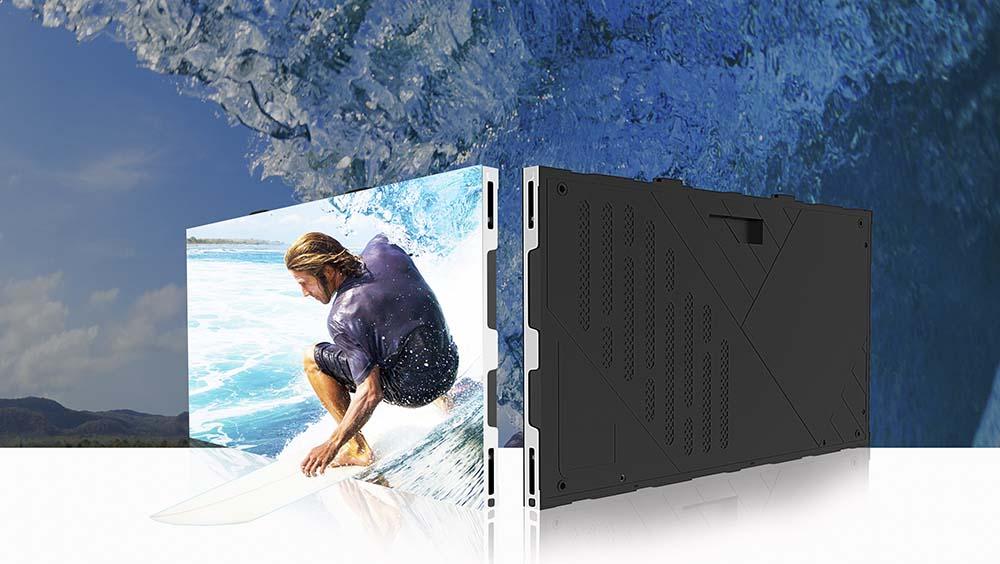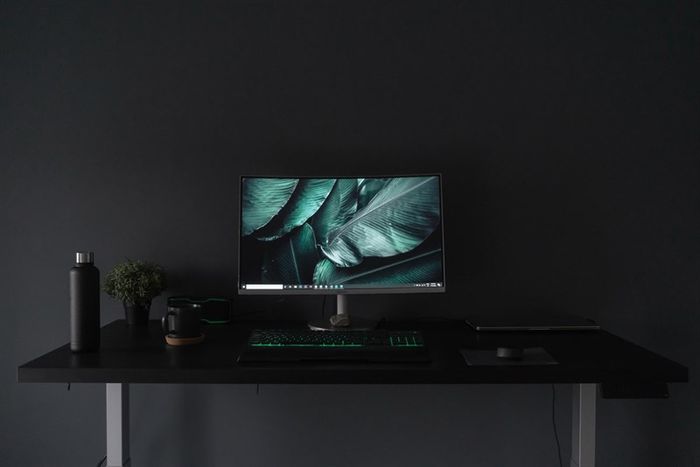Deciding between SMD and COB LED displays depends on use cases: SMD, common in outdoor signs, offers 1500-2000 nits brightness for visibility but struggles with single-bulb repairs; COB, pricier yet durable, boasts >5000:1 contrast and dust resistance, ideal for high-end indoor use.
Indoor/Outdoor Brightness
Outdoor environments demand displays hitting at least 1,500 nits to stay readable in direct sunlight (where ambient light hits ~100,000 lux), while indoor spaces (300–500 lux) max out comfortable viewing at 1,000 nits to avoid eye strain.
SMD, the go-to for outdoor signs, typically clocks 1,500–2,000 nits peak brightness thanks to its separate red/blue/green chip design that pumps more light per module. B
COB, built by encapsulating chips under a resin layer, averages 800–1,200 nits but spreads light evenly, cutting hot spots to under 5% variation.
-
SMD outdoor brightness: 1,500–2,000 nits, with 3–5% annual lumen depreciation after 5 years (due to exposed LEDs degrading faster in UV).
-
COB indoor brightness: 800–1,200 nits, but retains 95% of initial brightness after 5 years (resin coating protects chips from heat/dust).
-
Sunlight readability test: SMD stays visible at 10:00 AM summer sun (120,000 lux); COB struggles unless brightness is cranked to 1,400 nits (using more power).
If you’re putting up a stadium scoreboard, SMD’s 2,000 nits ensures fans see scores at noon.COB’s 1,000 nits with zero hot spots keeps guests impressed without squinting. Just remember: pushing SMD beyond 2,000 nits indoors wastes energy (costing ~$120/year extra per 100 sq ft) and causes eye fatigue.
COB can’t touch SMD’s outdoor punch, but its 1,200 nits is plenty for boardrooms where consistency beats brute force.
Single Bulbs vs Panels
When an LED display fails, repair speed and cost directly hit your bottom line—SMD lets you fix single dead bulbs in minutes, while COB forces full panel swaps that take hours and cost 10x more. Data backs this: SMD has a 2-3% annual dead bulb rate (from thermal cycling breaking solder joints), with each fix costing 15 and taking 15-30 minutes. Its resin-encapsulated chips mean a single dead pixel often ruins a whole panel—you’re looking at 300 per 32x32cm panel and 2-4 hours of downtime.
SMD repairs are straightforward because each LED is independent: techs use a vacuum pen to lift the bad chip (2 minutes per bulb) and solder a replacement, a 2121-sized LED that costs $12.
Calibration: they’ll run a spectrophotometer to adjust RGB values, bringing color deviation down to <2 ΔE (human eyes can’t spot differences below 3 ΔE).
A 32x32cm COB panel holds 2048 pixels; if 10 die, the panel’s brightness drops 15-20% and shows a dark patch. Fixing it requires disconnecting the panel from the driver board (15 mins), unscrewing it from the frame (10 mins), and soldering the new panel in (30 mins).
Worse, if the panel’s discontinued (common with older models), you might wait 1-2 weeks for a match, leaving your screen with a permanent flaw. And while COB panels have a 0.5% annual failure rate, when they do fail, the cost is brutal: replacing 5 panels on a 100x100-inch screen could hit $1,500—5-8% of the display’s original price.
The math is clear: SMD repairs cost 15 per incident with minimal downtime. COB? 300 per panel and hours of disruption.
Picture Quality
For SMD LED displays, static contrast ratios top out at 1,200–1,800:1 (the fixed difference between white and black brightness), while COB dominates with 5,000–8,000:1 static contrast—and dynamic contrast (frame-by-frame adjustment) hits 100,000:1 to 120,000:1.
In a boardroom showing quarterly reports, SMD’s 1,500:1 contrast might make gray text on white blur. COB’s 6,000:1? Black text pops, no eye strain, and charts’ subtle lines stay sharp.
|
Feature |
SMD LED Display |
COB LED Display |
|---|---|---|
|
Static Contrast Ratio |
1,200–1,800:1 |
5,000–8,000:1 |
|
Dynamic Contrast Ratio |
Up to 50,000:1 |
Up to 120,000:1 |
|
Effective Contrast @ 1,000 Lux |
400–600:1 (light washout) |
3,500–5,000:1 (minimal loss) |
|
Gray-to-Gray Response Time |
8–12 ms (slight motion blur) |
3–5 ms (sharp action) |
|
Dead Pixel Impact |
Spreads to adjacent pixels (0.01% failure rate) |
Isolated to single pixel (0.005% failure rate) |
|
3-Year Contrast Retention |
60–70% (loses 300–500:1) |
85–90% (keeps 4,250–7,200:1) |
Look at effective contrast at 1,000 lux. COB keeps 3,500–5,000:1, so a clothing store’s product photos retain rich blacks and vibrant colors; SMD drops to 400–600:1.
Dynamic contrast matters for movies or sports: COB’s 120,000:1 adjusts brightness per frame, so a football player’s dark jersey pops against a sunny field.
Dead pixels tell another story: SMD’s 0.01% failure rate seems low, but a dead red chip next to black makes the area look purple. COB’s 0.005% rate? A dead pixel is nearly invisible, thanks to the resin isolating it. SMD loses 30–50% of its contrast after 3 years. COB? Only 10–15% loss.
Venues & Budget
When choosing between SMD and COB, matching the display to the venue requirements and budget is far more important than simply chasing specifications. For outdoor scenarios like sports stadiums or highway billboards, SMD is almost the only choice: its upfront cost is $150–$200 per square foot (compared to $230–$280 per square foot for COB), and it offers a brightness of 1,800–2,200 nits, which is sufficient to cope with direct sunlight.
SMD boasts a lifespan of 50,000 hours (equivalent to 7–9 years of use every night), meaning you won't overspend on premature replacement. For instance, a 30ft $\times$ 20ft stadium scoreboard using SMD technology costs approximately $90,000, and if a single LED bead fails during a game, a technician can fix it within 20 minutes, with each repair costing about $12. If a COB display experiences a dead pixel, the entire module needs to be replaced, costing about $300 and resulting in about 2 hours of downtime.
A 10x15ft retail window display in SMD costs 210 vs.
A 15x20ft gallery display in COB costs 10k+ art pieces, that means your displays keep colors crisp and blacks deep. COB also has 0.5% annual failure rate (vs. SMD’s 2–3%), so you’re not spending
To make it simple, here’s the venue-and-budget cheat sheet:
-
Outdoor stadiums/billboards: Go SMD—200/sq ft upfront, 15/year maintenance, saves $5k+/year vs. COB on upkeep (critical for large outdoor displays where downtime = lost fan revenue).
-
Retail stores/conference centers: Stick with SMD—120/sq ft upfront, 12/year maintenance, minimizes peak-hour downtime (e.g., fixing a Black Friday menu board before lunch instead of losing sales for 2 hours).
-
Art galleries/luxury hotels: Invest in COB—300/sq ft upfront, 5/year maintenance, preserves brand prestige (crisp, consistent visuals justify premium pricing and attract high-spending clients, offsetting the initial cost).
Budget-wise, if you’re spending under
SMD screens sell for $150–$200 per square foot, while COB is directly 40% more expensive ($230–$280/square foot). For example, for a 30x20 foot outdoor advertising screen, the total price for SMD is about $90,000, while COB costs $138,000–$168,000, a difference of a full $50,000.
The advantage of SMD lies in "minor repairs and touch-ups": The annual maintenance fee is $10–$15 per square foot, mainly for replacing dead lamp beads ($12 per piece). It has an annual failure rate of 2–3%. For a 30x20 foot screen, roughly 180–270 lamp beads die each year, costing $2,160–$3,240 per replacement.
Over 5 years, the total maintenance fee is $10,800–$16,200, which averages out to only $2,160–$3,240 per year. Furthermore, repairs are fast, taking 15 minutes per bead, meaning the outdoor advertising screen is almost continuously operational.
COB is painful upfront but hassle-free later: The annual maintenance fee is $3–$5 per square foot, with a failure rate of only 0.5%. For the same 30x20 foot screen, do 300–600 lamp beads die each year? No. COB is resin-encapsulated, so a single dead bead does not affect the whole.
The actual annual failure rate of 0.5% refers to the probability of the entire screen having an issue, which might happen only once in 5 years. Replacing a panel costs $200 (small size), or the entire screen is sent back to the factory for repair (large size).
But the most critical factor is downtime loss: repairing a COB panel takes 2 hours, while replacing an SMD lamp bead takes 15 minutes. For a retail store, 2 hours of closure on Black Friday means a loss of $500/hour. The extra $30,000 initial cost for COB might be largely offset over 5 years by 10 such downtime losses ($5,000).
However, the situation is different for high-end scenarios: Art galleries use COB, requiring almost no repairs over 5 years, maintaining consistently clear images, and attracting more collectors to hold exhibitions.





Leave a comment
This site is protected by hCaptcha and the hCaptcha Privacy Policy and Terms of Service apply.